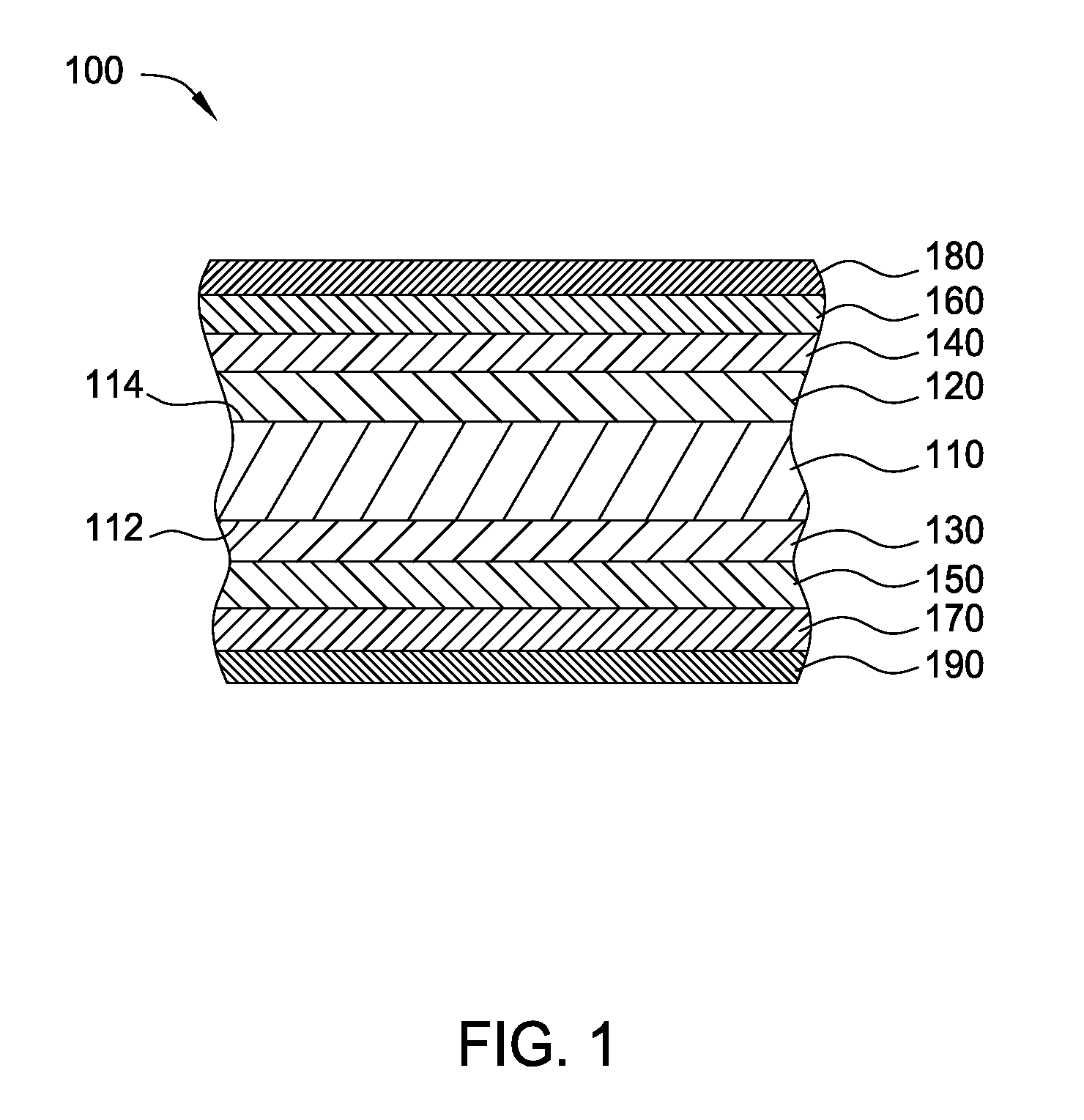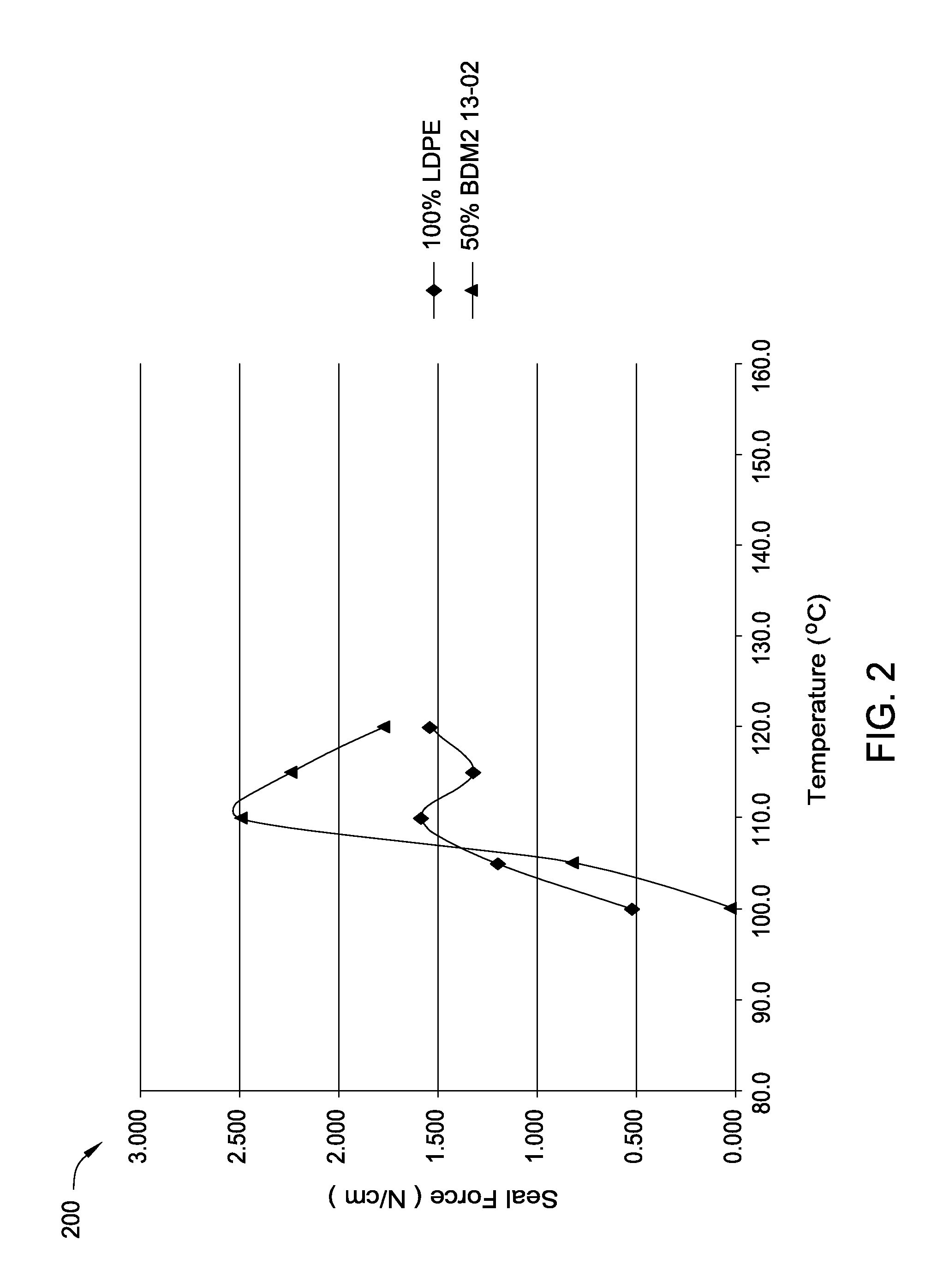Polyolefin and cellulose laminate for food and beverage containers
a technology of cellulose laminate and polyolefin, which is applied in the direction of transportation and packaging, rigid containers, packaging, etc., can solve the problems of oxidation by-products, inability to isolate and remove low molecular weight molecules, and inability to separate undesirable low molecular weight portions in the autoclave process
- Summary
- Abstract
- Description
- Claims
- Application Information
AI Technical Summary
Benefits of technology
Problems solved by technology
Method used
Image
Examples
example 1
[0081]A series of extrusion coating trials were performed to determine the maximum amount of metallocene polymer that could be blended with high pressure LDPE before the neck-in (waste) became unacceptable.
[0082]Using a six inch main extruder (A) and a 3.5 inch co-extruder (B) we established that a 50 / 50 ratio increased the neck-in by 2 inches total or an increase of about 60%. This amount was considered acceptable to the process.
[0083]45,000 lineal feet of substrate were processed creating an 18 point SBS substrate with a 10.8 lb / ream polyethylene coating. This is the material caliper and coat weight for a typical sidewall hot cup laminate. Bottom stock would be made using 14 point SBS with the same 10.8 lb / ream polymer coating. The structure was fabricated for hot cups so a coating was applied to the paper side intended for the inside of the container only. The completed sample was:
[0084]Clay Coating (smooth print surface) / Substrate / B / A / B (gloss chill roll) coextrusion coating whe...
PUM
| Property | Measurement | Unit |
|---|---|---|
| Fraction | aaaaa | aaaaa |
| Fraction | aaaaa | aaaaa |
| Fraction | aaaaa | aaaaa |
Abstract
Description
Claims
Application Information
 Login to View More
Login to View More - R&D
- Intellectual Property
- Life Sciences
- Materials
- Tech Scout
- Unparalleled Data Quality
- Higher Quality Content
- 60% Fewer Hallucinations
Browse by: Latest US Patents, China's latest patents, Technical Efficacy Thesaurus, Application Domain, Technology Topic, Popular Technical Reports.
© 2025 PatSnap. All rights reserved.Legal|Privacy policy|Modern Slavery Act Transparency Statement|Sitemap|About US| Contact US: help@patsnap.com



